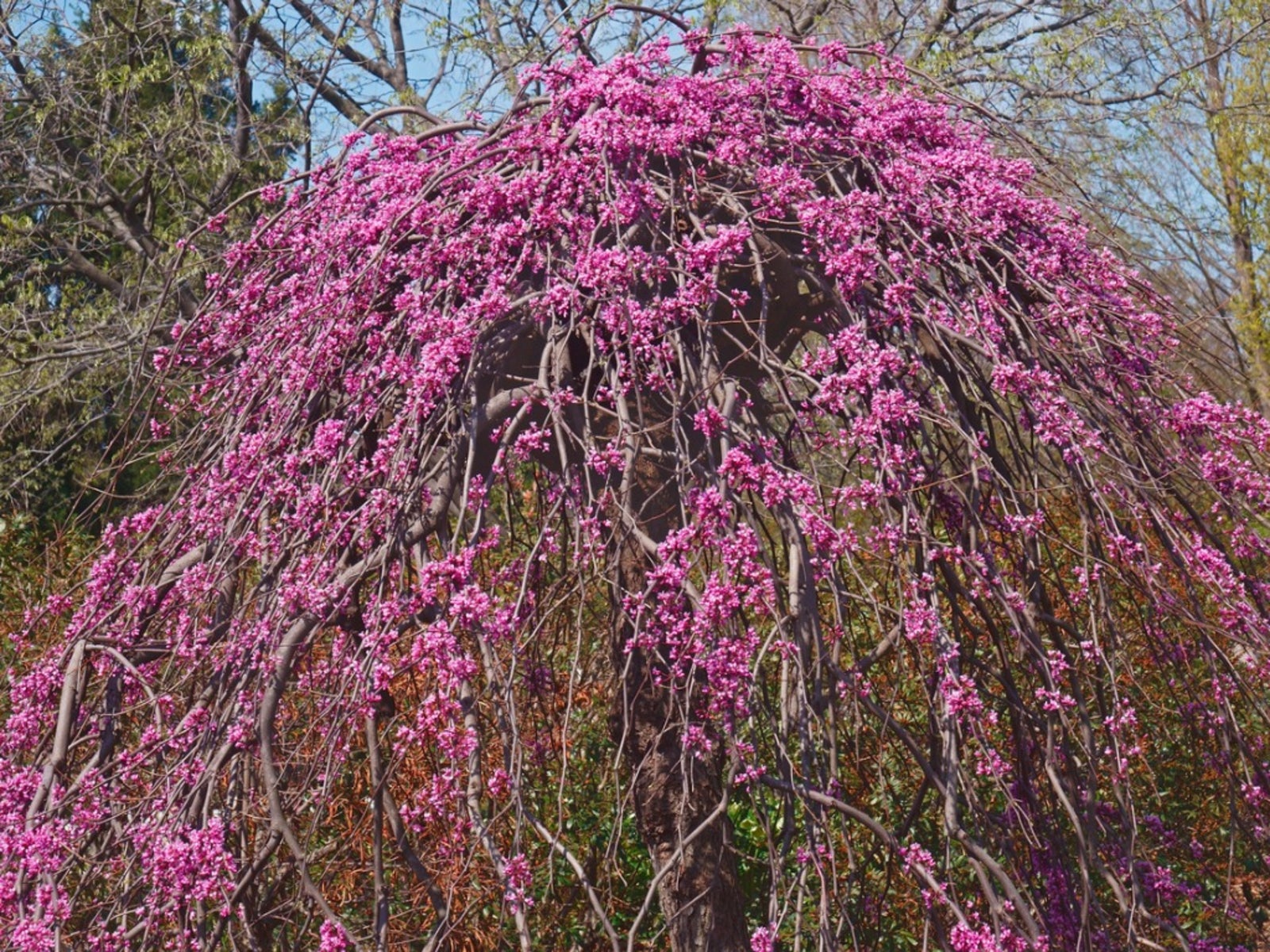Lavender Twist Redbud Care: Growing Weeping Lavender Twist Redbuds


Throughout the southeastern United States, the small purple-rose flowers of the redbud announce the arrival of spring. The eastern redbud (Cercis canadensis) is native to North America, where it can be found growing from parts of Canada down into northern regions of Mexico. It is most common, though, throughout the southeastern U.S. These redbuds have become popular ornamental trees for the home landscape. Many new unique varieties of eastern redbuds have been introduced by plant breeders. This article will discuss the weeping tree variety of eastern redbud known as ‘Lavender Twist.’ Read on for weeping redbud info and tips on how to grow a Lavender Twist redbud.
About Lavender Twist Redbud Trees
Lavender Twist redbud was first discovered in a Westfield, N.Y. private garden of Connie Covey in 1991. Cuttings were taken for propagation by plant breeders, and the plant was patented in 1998. It is also known as the ‘Covey’ eastern redbud. Lavender Twist redbud is a dwarf variety, slowly growing 5 to 15 feet (1.5-5 m.) tall and wide. Its unique attributes include the pendulous, weeping habit and contorted trunk and branches. Like the common eastern redbud, Lavender Twist redbud trees bear small, pea-like pink-purple flowers in early spring, before the tree leafs out. These flowers form all along the tree's cascading, twisted branches and its trunk. The blooms last about three to four weeks. Once the blooms fade, the plant produces bright green heart-shaped foliage. This foliage turns yellow in autumn and drops earlier than most trees. Since Lavender Twist goes dormant earlier than other varieties, it is considered more cold hardy. Their contorted branches and trunk add winter interest to the garden.
Growing Weeping Lavender Twist Redbuds
Weeping Lavender Twist redbuds are hardy in U.S. zones 5 through 9. They grow best in moist, but well-draining soil, in full sun to part shade. In warmer climates, Lavender Twist redbud trees should be given some shade from the afternoon sun. In spring, feed them with a general-purpose fertilizer before blooms appear. They are deer resistant and black walnut tolerant. Lavender Twist redbuds also attract bees, butterflies, and hummingbirds to the garden. Lavender Twist redbud trees can be pruned to shape while dormant. If you wish to have a straight trunk and taller tree, weeping Lavender Twist redbud’s trunk can be staked when the tree is young. When left to grow naturally, the trunk will be contorted, and the tree will grow shorter. Once established, Lavender Twist redbud trees do not transplant well, so select a site where this beautiful specimen tree can shine in the landscape for many years.
Sign up for the Gardening Know How newsletter today and receive a free copy of our e-book "How to Grow Delicious Tomatoes".

Darcy is a former contributor to Gardening Know How. She is a professional landscape designer and gardening writer with experience in plant sales. An avid gardener, Darcy has a passion for sharing practical tips to help others grow.